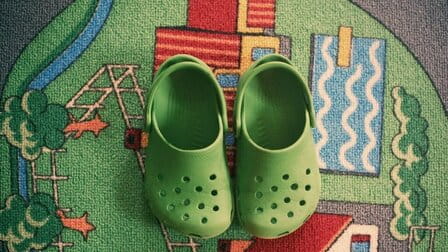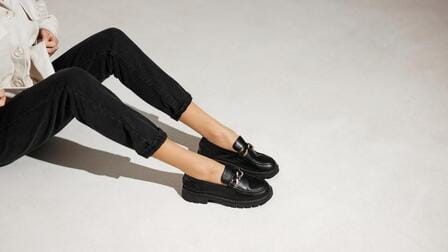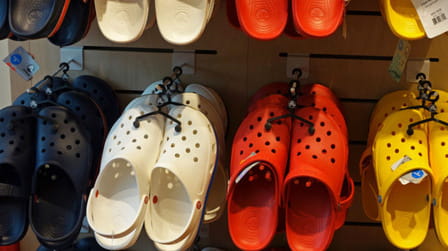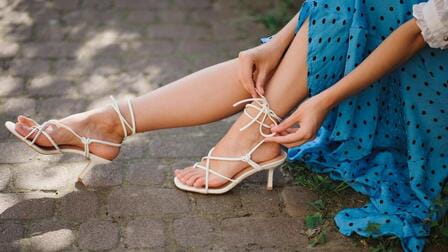Water sandals have become a popular footwear choice for water activities and recreation. Made with lightweight, quick-drying materials and traction outsoles, they provide both protection and mobility for swimming, wading, and water sports. But can you really swim comfortably in water sandals?
The short answer is yes, you can swim in water sandals. In fact, many water sandal models are specifically designed for use in the water. With the right pair that fits well, water sandals can be a great option for swimming, allowing your feet to move freely while staying protected.
In this article, we’ll take a closer look at the benefits and drawbacks of swimming in water sandals. We’ll also provide tips for choosing the right pair of water sandals for swimming and review some of the most popular sandal options on the market today. Read on to learn all about swimming in these versatile aquatic shoes!
Overview
Water sandals are a type of outdoor sandal that is designed to be worn in wet settings and water environments. They are constructed with materials that dry quickly and offer traction on slippery surfaces. Popular brands of water sandals include Teva, Keen, Chaco, and Merrell.
While opinions vary, most water sandal manufacturers state that their shoes can safely be used for swimming. Water sandals provide certain advantages over swim fins or bare feet when swimming. However, they also have some drawbacks to consider.
Some of the potential benefits of swimming in water sandals include: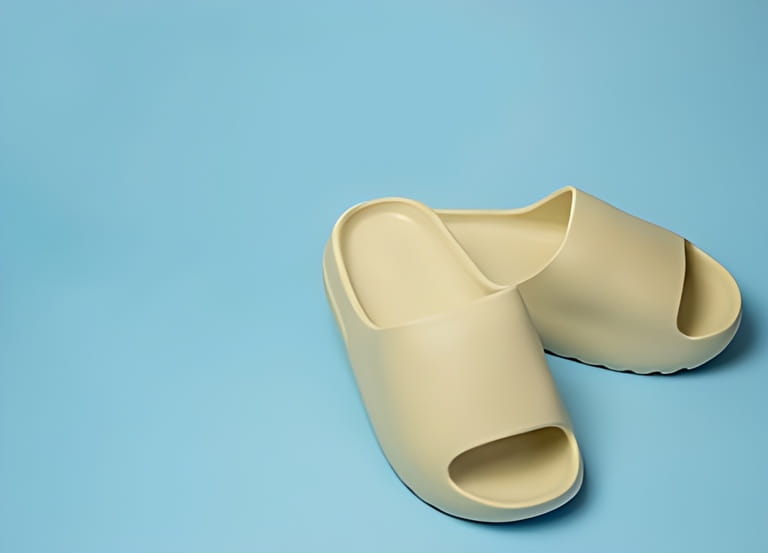
- Traction - Water sandal soles grip the pool floor or rocky lake bottom to prevent slipping. This is especially helpful for beginner swimmers.
- Protection - Sandals protect feet from scrappy pool surfaces and sharp rocks in natural swim areas.
- Comfort - Water sandals are designed to be comfortable when wet. They do not constrict feet like swim fins.
- Versatility - Water sandals transition seamlessly from water to land. They can be worn to walk to the beach or pool.
Some potential drawbacks when swimming in water sandals:
- Drag - Sandals create more drag in the water than bare feet, slowing swimmers down.
- Fit - Poorly fitted sandals may fall off in the water. Proper fit is important.
- Durability - With rough use, sandal straps and soles may wear out faster than swim fins.
While the drag factor may dissuade competitive swimmers, water sandals are perfectly suitable for recreational swimming, floating, wading, and water aerobics. Choosing a well-fitted pair and taking care of them will maximize their lifespan.
How to Choose Water Sandals for Swimming
When selecting the best water sandals for swimming, keep these key factors in mind:
Fit

Proper fit is crucial when choosing any athletic footwear and water sandals are no exception. Water sandals should fit snugly without pinching or rubbed areas which can lead to blisters and hot spots.
When trying on sandals, walk around the store and simulate swimming motions to ensure the fit is secure. The toe area should have enough wiggle room for comfort. Meanwhile, the heel should not slip up and down excessively.
Adjustable straps allow you to customize the fit. Look for straps across the toe, instep, and back of the ankle. The straps should hold the foot in place securely while allowing a full range of motion.
Traction
Traction is vital for maintaining good footing on wet pool decks, boats, and rocky shores. When shopping for swimming sandals, inspect the sole material and tread pattern.
The best water sandals will have a lugged sole with prominent tread rather than a flat smooth one. This allows the sole to grip on slippery wet ground. Rubber compounds provide superior wet/dry traction over materials like plastic or foam.
Avoid soles that seem overly stiff or inflexible. Flexibility promotes natural foot motions which optimizes power and speed through the water.
Comfort

To maximize comfort during prolonged wear in the water, seek out a contoured footbed that follows the natural shape of your foot. A cushioned footbed will reduce foot fatigue.
The upper straps that secure the sandal should be padded where they cross your foot to prevent chafing. Neoprene is a popular padded strap material.
Venting holes throughout the upper will facilitate drainage and air circulation around your foot. Good ventilation keeps feet cooler and more comfortable when wearing sandals in and out of the water for an extended time.
Durability
While water sandals are popular for their versatility, most models are not designed to withstand intense long-term use. Many are intended for recreational, non-competitive swimming.
That said" choose rugged designs with reinforced straps and tough sole materials if you plan to wear your swimming sandals hiking over rocks or in fast moving rivers.
Prioritize models featuring sturdy buckles over flimsy Velcro closures prone to wear out faster. Replaceable insoles can also extend the life of your sandals.
Avoid lightweight synthetics like mesh if you want maximum durability. Nylon webbings and rubber outsoles will better withstand abrasion in rough swim conditions.
Popular Water Sandals for Swimming
Many top athletic brands now produce water-friendly sandals suitable for swimming. Here are some of the most popular water sandal models on the market:
Teva Hurricane XLT2
The Teva Hurricane XLT2 tops our list thanks to its rugged durability. This sporty model features thick nylon webbing straps with sturdy plastic buckles that hold up well during repeated submersion.
The lace-up design allows you to fine-tune the fit while a padded heel riser provides a locked-in feel. The razor siping on the sole ensures solid traction on slippery surfaces. Available in men’s and women’s sizes.
Merrell Choprock
This Merrell classic belongs in any water sandal buyer’s guide. The wide webbed straps hold fast even during active use and a curved rubber sole maintains steadiness when walking in water.
Back pull tabs make the sandals easy to slip on and off in a jiffy. Antimicrobial treated foam prevents odors after repeated wear. The Choprock excels for water aerobics, wading, or rafting trips.
Keen Whisper
Keen’s Whisper sandal provides toe protection thanks to its sturdy bumper guard. Quick-drying polyester webbing and bungee lacing deliver a customizable, secure fit wet or dry.
The non-marking rubber outsole features razor siping to prevent slips on slick surfaces. Whisper is a great choice for pool days and trips to water parks with the family.
Speedo Surfwalker 3.0
This popular pick is engineered specifically for swimming and beach days. Horizontal and vertical draining holes promote quick drying after exiting the water.
Textured footbeds prevent your feet from sliding around inside the sandals. Durable Eva outsoles give you traction during ocean swims and walks along the shoreline. Speedo’s Surfwalker comes in a huge range of colors.
Chaco Z/Cloud
Chaco sandals are revered for their comfort and durability during hiking and water activities alike. The Z/Cloud model features adjustable jacquard webbing straps to customize the fit.
Deep lugs on the non-marking Vibram outsole bite into slick surfaces while a toe loop provides added security. These sandals excel for multi-water sports like kayaking and stand-up paddleboarding.
Tips for Swimming in Water Sandals
Follow these expert tips to make the most of your water sandal swimming experience:
- Break in new sandals by wearing them dry on short walks before taking them for a swim. This allows you to spot any rub points.
- Position toe and ankle straps so they lie flat and even without twisting when tightened. Twisted straps cause chafing.
- Hand wash sandals with mild soap and water after each use to prevent bacteria growth and odors. Air dry fully.
- Replace removable foam footbeds twice per season or whenever they show wear. This extends the life of sandals.
- Apply an anti-fog spray to the footbed and inside sole of sandals before swimming to prevent condensation buildup.
- Bring a small towel in your swim bag. After exiting the water, pat dry between your toes and the sandal footbed for faster drying and comfort.
- Take sandals off if you plan to swim laps competitively or for long distances. Bare feet or fins are faster for athletic swimming.
- Avoid wearing water sandals in fast-moving rivers or ocean surf which can potentially pull them off your feet. Opt for water shoes instead.
Conclusion
Water sandals are a practical choice for recreational swimming, pool lounging, and all sorts of aquatic adventures. Models from trusted athletic brands provide a balance of comfort, protection, grip, and reliability in the water.
Focus on finding water sandals with good adjustability to lock down your foot during active wear. Well-vented uppers and contoured footbeds also boost the swimming experience. With the right pair, you'll be ready to dive in wearing secure and comfortable water footwear.
When cared for properly, water sandals can provide seasons of use across multiple wet or dry settings. Take them fishing, wear them at the waterpark, and never hesitate to jump in for an impromptu swim knowing your sandals are up for it. Grab a pair of these amphibious shoes and enjoy the flexibility of their go-anywhere performance.



